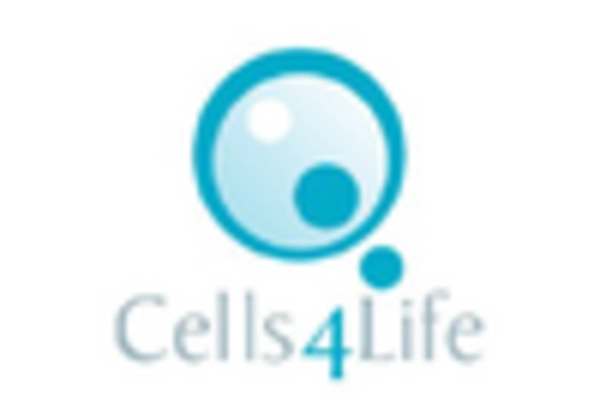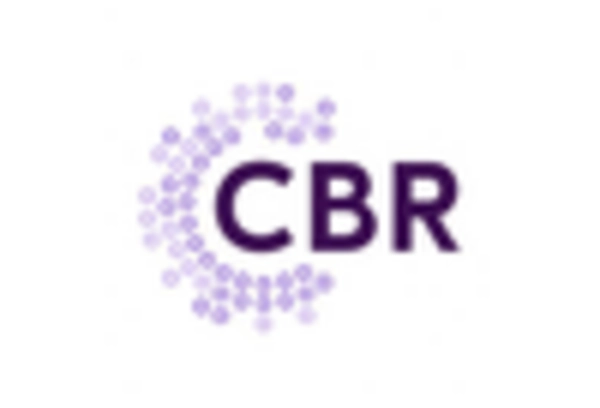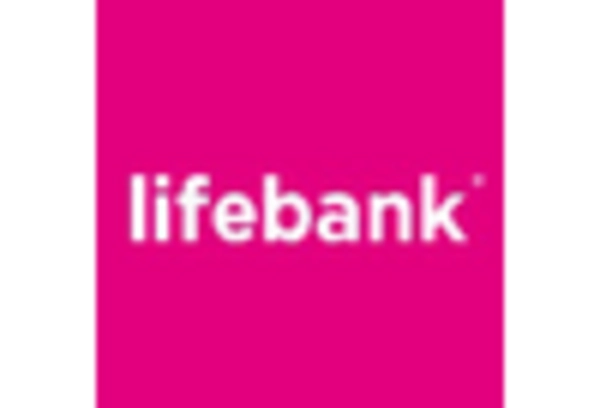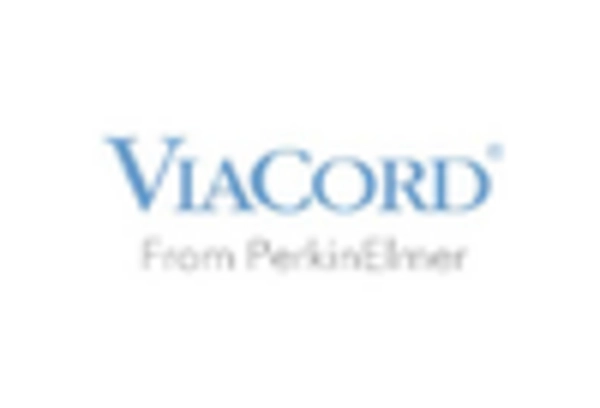Advancements in Stem Cell Research
Ongoing advancements in stem cell research are propelling the growth of the stem cell-banking market in Germany. Research institutions and universities are increasingly focusing on the potential of stem cells in regenerative medicine, leading to breakthroughs that enhance the understanding of stem cell applications. In 2025, funding for stem cell research in Germany is expected to exceed €500 million, reflecting the commitment to exploring new therapeutic avenues. These advancements not only improve the efficacy of existing treatments but also pave the way for novel therapies that could revolutionize patient care. As a result, the stem cell-banking market is likely to expand, driven by the need for high-quality stem cell storage solutions that support ongoing research and clinical applications.
Growing Public and Private Investment
The stem cell-banking market is witnessing a significant increase in both public and private investment in Germany. Government initiatives aimed at promoting biotechnological innovations are creating a favorable environment for stem cell research and banking. In 2025, it is estimated that investments in the biotechnology sector will reach €3 billion, with a substantial portion directed towards stem cell applications. Private sector involvement is also on the rise, as venture capital firms recognize the potential for lucrative returns in the stem cell-banking market. This influx of capital is likely to enhance the infrastructure and technology available for stem cell storage, thereby improving service offerings and attracting more clients. Consequently, the market is poised for robust growth as investment continues to flow into this promising sector.
Rising Incidence of Genetic Disorders
The increasing incidence of genetic disorders in Germany significantly drives the stem cell-banking market. With approximately 1 in 200 children born with a genetic condition, the demand for stem cell therapies that can address these issues is on the rise. In 2025, the prevalence of genetic disorders is expected to continue its upward trend, prompting families to seek proactive measures such as stem cell banking. This growing awareness of the potential benefits of stem cells in treating genetic conditions is likely to lead to a higher uptake of banking services. As a result, the stem cell-banking market is positioned to grow, catering to the needs of families looking for innovative solutions to safeguard their children's health.
Increasing Demand for Personalized Medicine
The stem cell-banking market is experiencing a notable surge in demand for personalized medicine in Germany. As healthcare shifts towards individualized treatment plans, the need for stem cells, which can be tailored to a patient's specific genetic makeup, becomes increasingly critical. This trend is supported by a growing body of research indicating that personalized therapies can lead to improved patient outcomes. In 2025, the market for personalized medicine in Germany is projected to reach approximately €20 billion, with stem cell applications playing a pivotal role. The increasing prevalence of chronic diseases and genetic disorders further fuels this demand, as patients seek innovative solutions that stem cell therapies can provide. Consequently, the stem cell-banking market is positioned to benefit significantly from this evolving healthcare landscape.
Regulatory Support for Stem Cell Applications
Regulatory frameworks in Germany are evolving to support the growth of the stem cell-banking market. The Federal Institute for Drugs and Medical Devices (BfArM) is actively working to streamline regulations surrounding stem cell therapies, which may facilitate easier access to banking services. In 2025, it is anticipated that new guidelines will be introduced, promoting transparency and safety in stem cell applications. This regulatory support is crucial for building public trust and encouraging more individuals to consider stem cell banking as a viable option for future medical needs. As regulations become more favorable, the stem cell-banking market is likely to experience increased participation from both consumers and healthcare providers, further driving market expansion.

















Leave a Comment